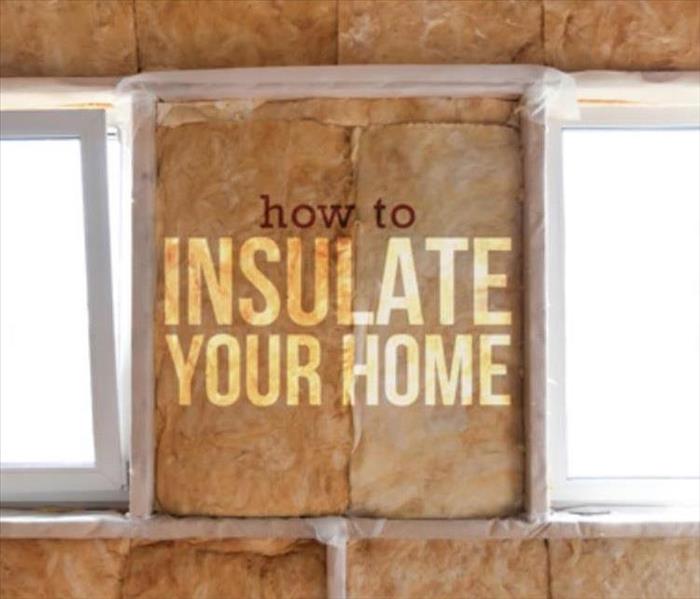How to Insulate Your Home and Keep Heating Costs Down
2/19/2018 (Permalink)
According to the U.S. Department of Energy, the average U.S. family spends at least $2,200 a year on energy bills – with nearly half of that going towards heating and cooling.
And as the temperature begins to fall, the cost to heat our homes starts to rise.
Now’s the time to make sure your home is well-insulated. A properly insulated home will keep the warmth inside, reducing your heating costs and improving comfort.
Use the five tips for insulating your home below to save on energy bills and keep you and your family nice and cozy this winter.
1. Seal Gaps Around Doors
Doors that aren’t correctly fitted to the frame form gaps. One of the simplest ways to insulate your home is to seal the gaps, typically found at the bottom of the door. These can easily be fixed by:
- Using weather strips: Weather strips are an easy, inexpensive way to stop air leaks.
- Installing draft stoppers: Also known as a door snake or door pillow, draft stoppers sit beneath the bottom of your door and can be made out of socks.
2. Cover or Repair Windows
Another tip for insulating your home is to cover or repair windows that are letting cold air in. For a quick fix, tape clear plastic film to the inside of your window frames and seal tightly. For a more long-term solution, replace old windows with new ones. Older homes that have single-pane windows lack proper insulation, causing your energy bills to skyrocket. To save money and keep those drafts from coming in, consider replacing with double or triple-pane windows.
3. Use Your Curtains
Curtains provide us with a sense of privacy, but they’re also good for insulating homes, especially if you have drafty windows. When the sun is out, open your curtains to let heat and light in. When it’s dark, close your curtains for an extra layer of insulation.
4. Insulate Your Attic
Proper insulation is not only key to finishing your attic, but increasing your energy savings as well. And when it comes to heat, about 25 percent is lost through the roof. You can reduce this by insulating the ceiling and walls. Loose-fill or batt insulation is typically installed in attics, but according to the U.S. Department of Energy, loose-fill insulation is best because it provides better coverage when properly installed.
5. Close Your Fireplace Damper
Fireplaces are a great source of heat, until they’re not. Unless a fire is burning, make sure you close your fire damper. An open damper is like leaving a window open, and if you’re damper is open, you’re letting heat escape. If you have installed gas logs in your fireplace, however, leave the damper open. Gas fireplaces release large amounts of carbon monoxide and therefore must always have an open damper. If your pilot light is not lit, close the damper to ensure you’re not losing any heat, but be sure to open it back up when your gas fireplace is in use.
Source: https://www.budgetdumpster.com/blog/insulate-home-cut-heating-costs/



 24/7 Emergency Service
24/7 Emergency Service

